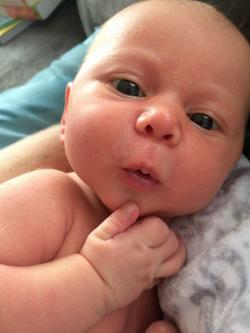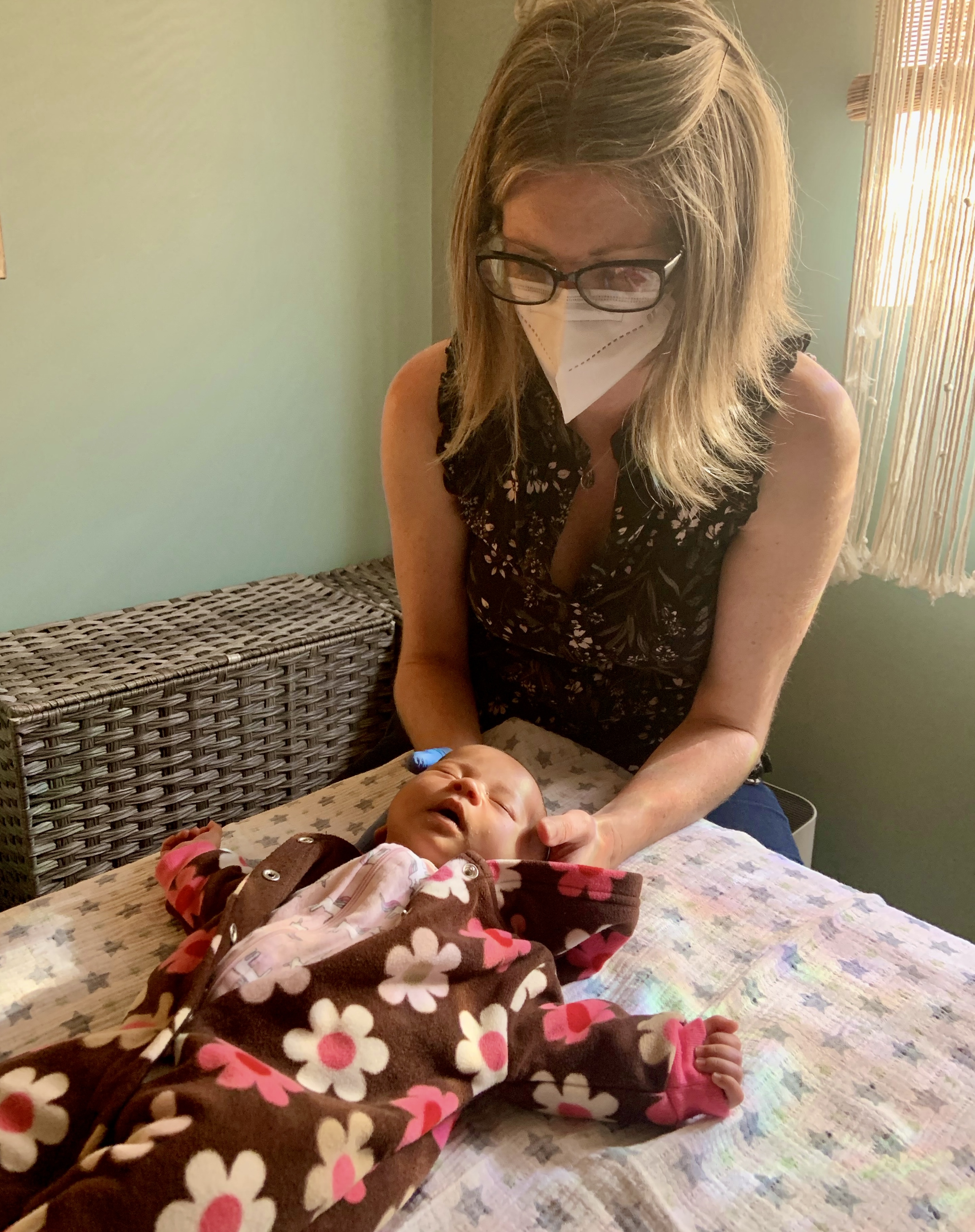

Birth and early life, while beautiful and amazing, sometimes come with complications. Babies today are frequently being diagnosed with latching and feeding issues, tongue and lip ties, colic, acid reflux, torticollis (wry-neck) and plagiocephaly (flat-head). Many of these conditions are functional impairments that play into each other, and can often be resolved by improving the mobility of the structures at issue.
Using gentle massage and craniosacral (CST) techniques, we can help restore proper mobility and function to these tiny beings, as well as incorporate tools for parents to use when positioning and playing with baby. Breastfeeding and milk supply issues often greatly improve once baby's tensions are relieved, allowing them to become more efficient.
The earlier we can correct these imbalances, the better, as they can interfere with feeding, sleeping and general growth and development. Craniosacral can also be helpful for babies who have sustained some form of birth trauma whether physical or emotional.
CST is very gentle, using only about 5 grams of pressure (the weight of a nickel) to slowly stretch and mobilize restrictions. Babies are rarely uncomfortable during treatment and their comfort levels are always respected.
When babies are born vaginally, their heads mould in order to pass through their mother's pelvis. This means that their cranial bones, which normally have some space between them at this stage, squish together and can override each other. Once baby is out, these overrides often correct themselves, but not always. If they persist, they can cause altered cranial nerve function contributing to a number of issues including colic, digestive, breathing or swallowing problems and impaired sensory or motor function.
Babies aren't always in the perfect position to be born and can sometimes end up with an injury to their head, neck, shoulders or pelvis. The use of extraction devices (vacuum, forceps) can also create injuries.
Cesarian-born babies can benefit from CST as well. These births are more abrupt and these babies tend to have higher incidences of respiratory issues and middle ear infections throughout childhood.


© Copyright Krista Eisner RMT